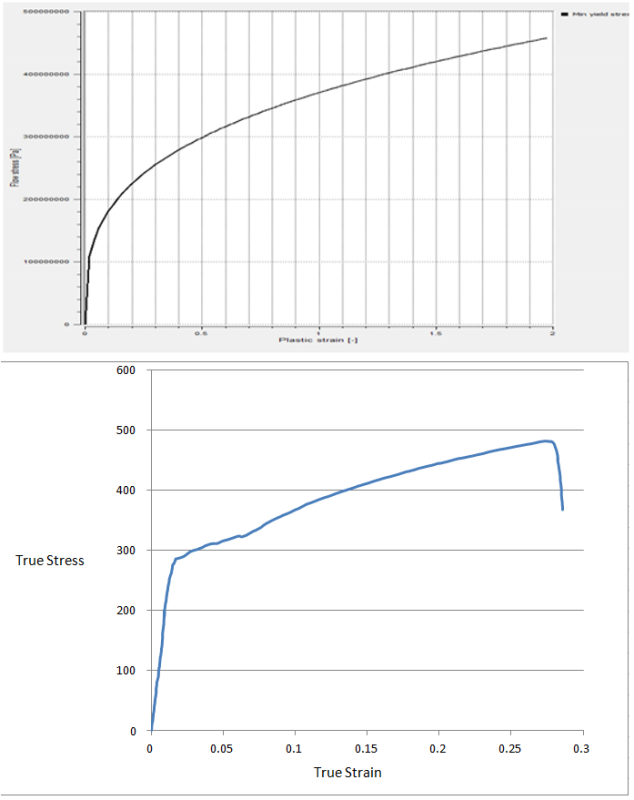LCform
Mechanical
- Jan 13, 2016
- 139
Hi All
I am doing some metal forming (cold) analysis, for that , my material properties can only be inserted in a simplified way. that is : sigmaf = C*(fi)^N
After tensile test, I noticed differences between the real material and the one in the FEM model ,since I can not model the real one, I would like to ask you , do you think there is too much difference between the two ?
the upper photo attached is the one in the software, and the lower is the one from the tensile test

I am doing some metal forming (cold) analysis, for that , my material properties can only be inserted in a simplified way. that is : sigmaf = C*(fi)^N
After tensile test, I noticed differences between the real material and the one in the FEM model ,since I can not model the real one, I would like to ask you , do you think there is too much difference between the two ?
the upper photo attached is the one in the software, and the lower is the one from the tensile test


